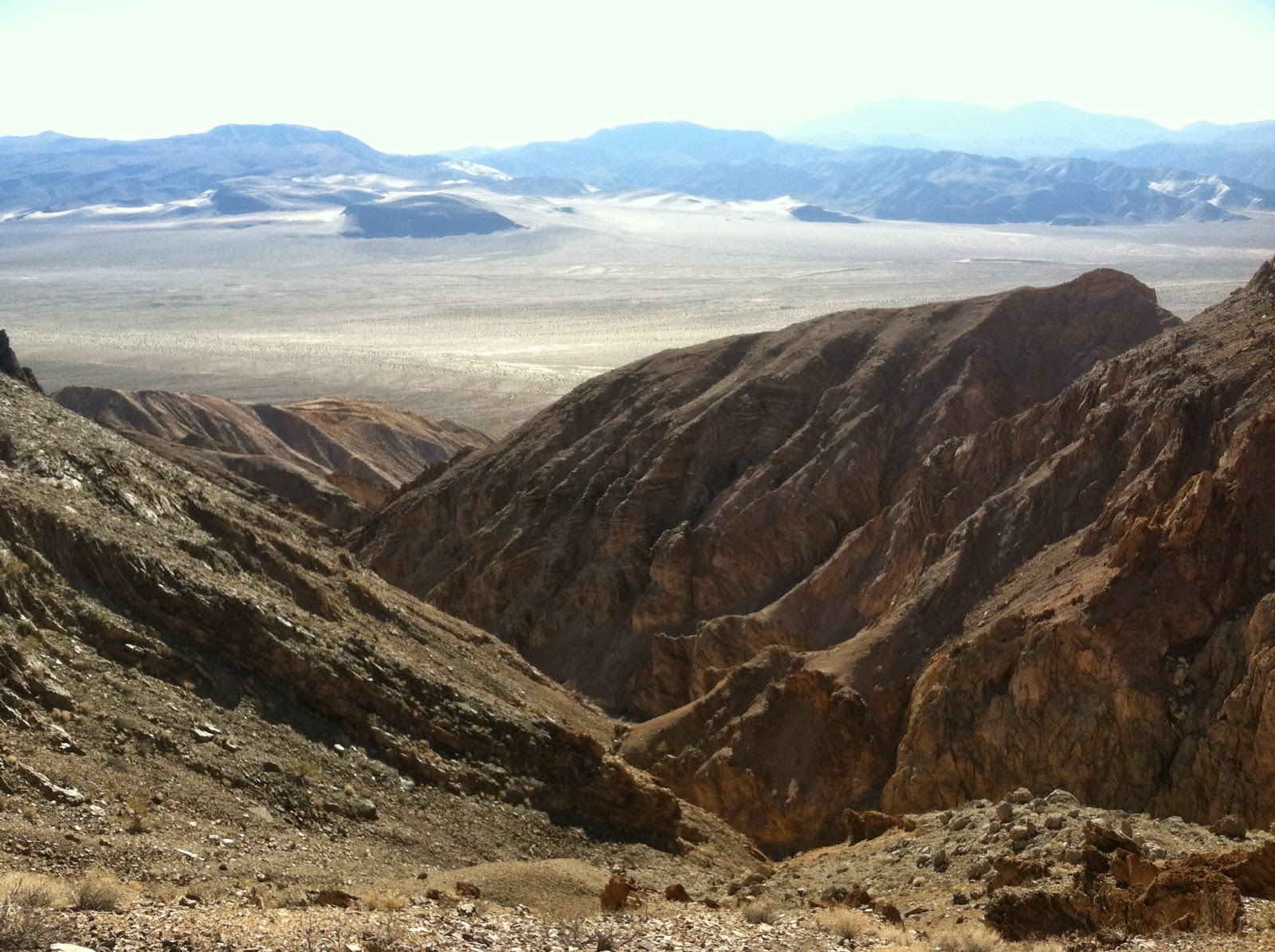
Black Mountain is the southernmost peak in California’s White Mount Range. It is a prominent mountain seen from the Owens Valley and is definitely black. An unnamed peak behind and to the east is only 40’ lower and is flanked on its east slope by a lead/silver mine. This unnamed peak is Black Mountain’s first line of defense.
From the White Mountain Rd we took a 5 mile dirt road to the mine site. The narrow road on the way there clung to side of steep mountain slopes and offered just enough width for one vehicle. You never want to meet another vehicle head on because someone is going to have to back up.
We parked near the mine, looked up the left side of the unnamed mountain and saw an intimidating angle of loose shale, sharp angular boulders and a false summit that lead to a false sense of easy achievement. According to Google Earth, the right side of the mountain looked like the best approach...wrong. It was loaded with mini cliffs and loose pieces of mountainside. So went back to the left and started there.
We didn’t hike up...we crawled. If the loose shale was at any greater angle, gravity would have pulled it off the mountainside. In fact in some areas where we stepped, patches of hillside would move under our feet; it was very unstable. On our way up, with pounding hearts and seeking breath, our feet were placed in faint divots in the shale left by someone else who attempted the climb. They were surprisingly useful since they stabilized small patches of shale, but they were there for just a short distance.

The mountainside became even steeper and we were forced to consider climbing on unbroken shale topped and surrounded by broken pieces. Hands couldn’t be used to climb because the rocks were piercingly sharp. This was insane. The false summit was passed, and we were discouraged by the distance still ahead of us. Our goal changed from reaching Black Mountain to simply getting to the top of this mountain. Looking up, we saw no acceptable route but we went ahead anyway; our planned course of action was to take a step...then choose our next step.
The rhythm of the climb briefly took our minds off the steepness, but a compulsive downward glance erased any thought of any fun we might have retreating down the mountain.

Thankfully the angle of the slope began to decrease; the top was near. We anticipated a good view... but a great view was coming. Looking towards the summit we saw blue sky, and the tip of Black Mountain; each step up revealed more of the peak. Then there it was, Black Mountain, framed by the backdrop of the Southern Sierra Nevada range with its 200 miles of towering granite peaks. The entire Owens Valley was within our view. To the east were row after row of mountain ranges way into Nevada; to the south was the undulating relief of the mountains of the northern Inyos; and turning to the north revealed views of the front range of the White Mountain range all the way to White Mountain Peak.
Black Mountain was just a half mile ahead and dared us to continue. But it was 3pm, and a quick calculation of time and distance, and the fact there would be a lot of scrambling over rocks, meant we’d return to the unnamed peak by sundown. The prospect of a possible night time descent back down what we just came up was alarming. Black Mountain could dare all it wanted.
After soaking in the view, we left the peak. We saw no safe way down...cliffs, sharp rocks, and unstable shale gave us no obvious choice of a path, so we placed one sliding foot in front of the other. Since no path was better than another, we pointed ourselves towards a dirt road in the distance where the truck was hopefully parked and avoided the most dangerous parts.
The slope decreased, the shale turned to softer ground, and the road met us at the bottom. We unlocked the truck, opened a bottle of cold bubble water, and started the engine. Looking at each other I said, “Did we actually do that?”



















